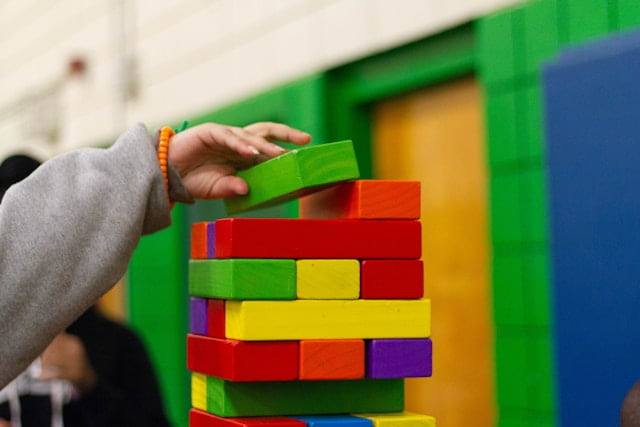WOOPing is a four step process for effective behaviour change developed by psychologist Gabriele Oettingen. The four steps spell WOOP. The are: Wish, Outcome, Obstacles, Plan. Summary by The World of Work Project
WOOPing
Most people recognise the benefits of personal growth and development, be it in their personal or their work lives. Whether it’s to grow and develop into a future role, change to find more contentment at work, develop as a person to create healthier relationships or make health related changes, many people are striving for some form of change.
The truth is, though, that change is hard.
Everything we do now, all of our behaviours, habits and routines, are a product of our whole lives leading to this moment in time. All our historic experiences, learned beliefs and perceived understanding of the world contribute to our behaviours. Changing them is not just a case of deciding that we want to do something differently, or receiving a new piece of information, or being told that we should change. It’s far more complicated.
Having a model to help us progress through a process of change is one way we can improve our chances of actually making behaviour changes happen and stick. And a good model to use is Gabriele Oettingen’s WOOP model, which doesn’t just focus on the positive side of change, but also acknowledges there will be challenges along any change path.
The model has four steps. We consider them below:
Step 1: Wish
W is for “Wish”, the starting point of this model.
At this stage the person seeking change makes a big wish. They identify a clear and significant goal they want to achieve. This could be anything from losing weight, acquiring a new skill, drinking less or developing an exercise habit.
In the context of work, wishes could include things like improving relationships with colleagues, getting better at public speaking, learning a new task or finding more contentment in their current role.
An important point is that the wish should actually deeply matter to the person. If we don’t really care about things, then the inertia of life typically gets in the way and stops us changing. It’s also important to try to choose a wish that is challenging yet achievable.
Step 2: Outcome
The first O is for “Outcome”. This might feel a bit like a wish when you read it, but it’s not. The outcome is a visualisation of what changes as a result of achieving the wish.
The task here is to visualise the best possible changes that will happen to you, and potentially to those around you, if you achieve your wish. This is all about helping you realise what can be achieved and the impact it will have. You can think of this as increasing the size of the carrot you’ll receive if you achieve your wish.
It can be helpful to try to fully immerse yourself in what the outcomes would be. What would it feel like? What emotions would you have? How would others feel? And so on.
For example, if you’re reflecting on losing weight as a wish, outcomes might include: how would you feel meeting your family at the holidays, jogging up some steps, going to a medical check-in and getting positive feedback from your Dr., living a few years longer and spending them with your children, and so on. You can also explore what the change would mean to others as well.
Though the example above is very much a personal one, the same process applies to work related changes.
Step 3: Obstacle
The second O is for “Obstacle”. This might be the most critical step in this process.
Everyone who has tried to change knows that challenges, obstacles and set-backs often come thick and fast. If we don’t expect these challenges, then it’s far more likely that they will destroy our motivation and confidence and we’ll stop making progress towards our desired change.
If, instead, we have predicted them, they’ll be far less surprising and we can continue our change journey.
An example of an obstacle for someone looking to lose weight could be that some of their social interactions with friends revolve around food. Perhaps they meet friends for dinner on a regular basis at an unhealthy restaurant, which could provide them with too much temptation to resist.
Step 4: Plan
Step four is to ‘Plan’ a response to each of these identified obstacles. This is all about creating and visualising using “if-then” strategies. If this negative obstacle occurs, then I will take this mitigating strategy. Alternatively, someone seeking to change could even preempt the obstacles.
This process of planning what to do in different situations is known as creating implementation intentions, and it has been shown to help automate our responses to common obstacles. This, in turn, makes it easier to stick to our goals when motivation wanes or difficulties arise.
An example of planning in our weight loss case could be to read the menu in advance and choose the healthiest option before you get to the restaurant, so that you have a better chance of ordering it. Alternatively, a plan could be to tell your friend about your desired weight loss plans and ask to move restaurants. Even more powerfully, though perhaps harder, a mitigation strategy could be to spend some time away from those friends who lead you into temptation.
Learning More
We first came across WOOP in Lauri Santos’ great online course, but there is a lot to read in this wider space of behaviour change.
You might enjoy Lewin’s behaviour equation, Bridges’ transition model, the behaviour change wheel, Intentional change theory and Covey’s See, Do, Get model.
You might also like some reading on habits including how to replace them.
This podcast of ours on behaviour change could be interesting too:
The World of Work Project View
We like this model and the evidence base behind it. It’s on of our go-to tools when speaking to workshop participants or coaching clients about behaviour changes. We love the connecting to “what’s in it for me” that it brings, though we also sometimes ask people to reflect on what will be different for others as well.
We also love the acknowledgement of obstacles too, and the drive to plan around them. Everything is fine when everything is fine but, in the immortal words of Mike Tyson, “Everyone has a plan until they get punched in the mouth“. It’s helpful to try and predict the obstacles and challenges that life throws at us and to prepare contingency plans to enact when these obstacles occur.
That said, even with an approach as good as WOOPing, behaviour change is hard. And some areas of behaviour change are super, super hard.
How We Help Organizations
We provide leadership development programmes and consulting services to clients around the world to help them become high performing organizations that are great places to work. We receive great feedback, build meaningful and lasting relationships and provide reduced cost services where price is a barrier.
Learning more about who we are and what we do it easy: To hear from us, please join our mailing list. To ask about how we can help you or your organization, please contact us. To explore topics we care about, listen to our podcast. To attend a free seminar, please check out our eventbrite page.
We’re also considering creating a community for people interested in improving the world of work. If you’d like to be part of it, please contact us.
Sources and Feedback
Oettingen, G. (2014). Rethinking Positive Thinking: Inside the New Science of Motivation.
We’re a small organization who know we make mistakes and want to improve them. Please contact us with any feedback you have on this post. We’ll usually reply within 72 hours.






